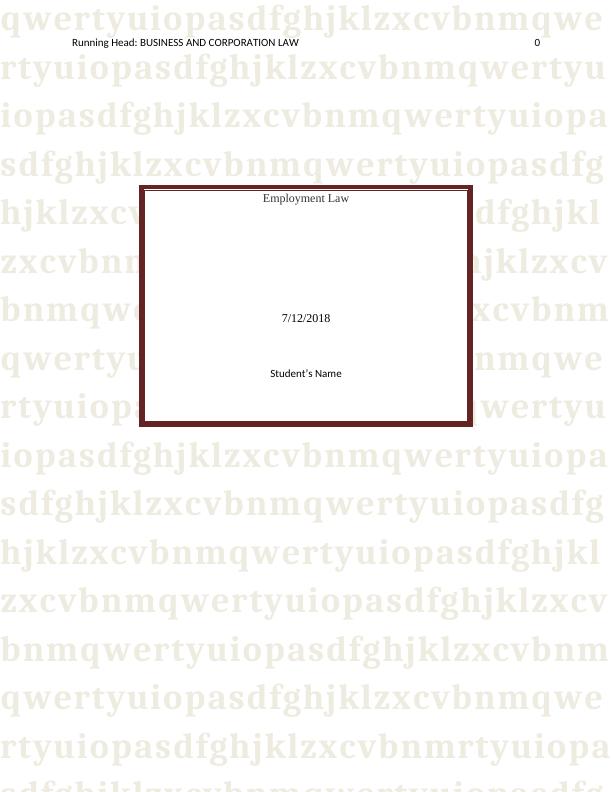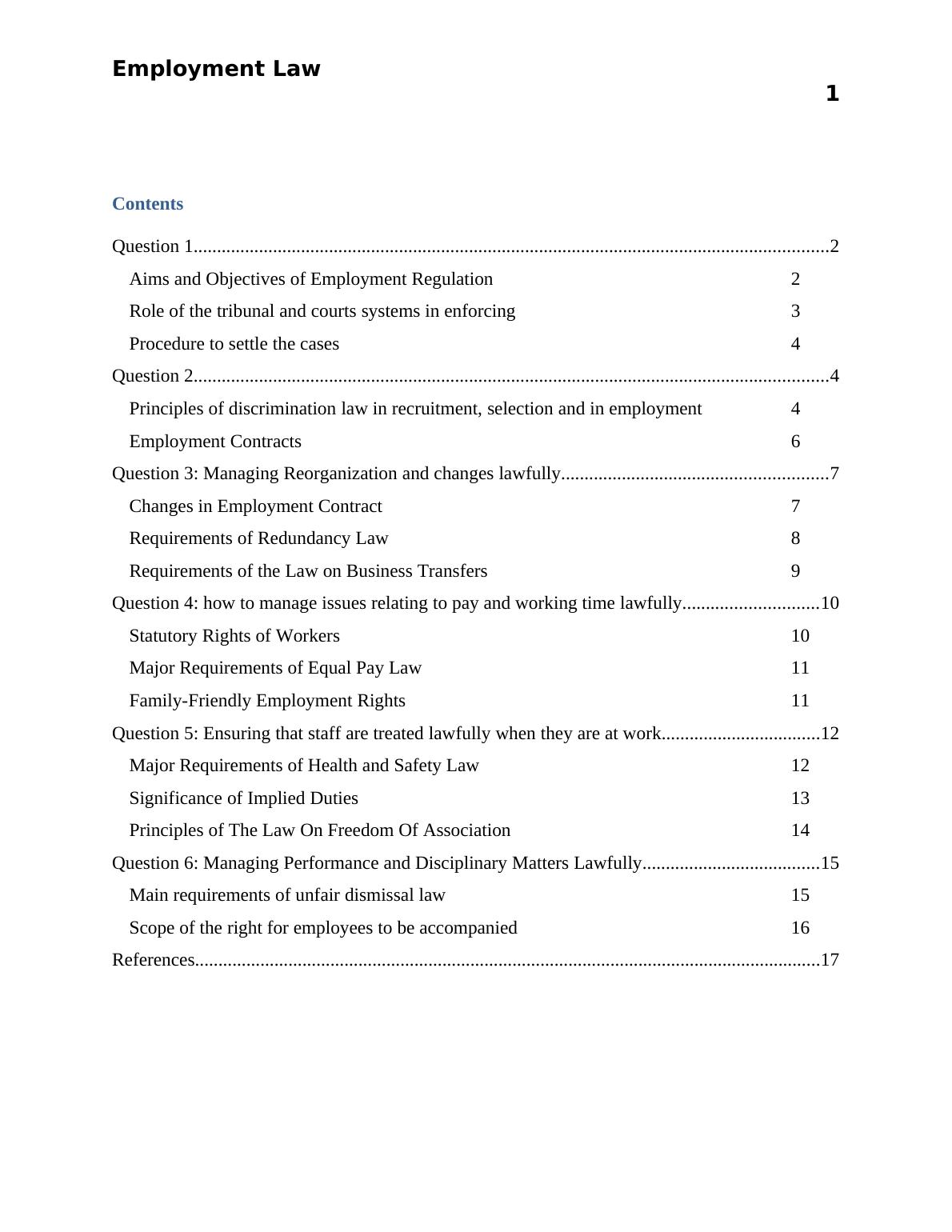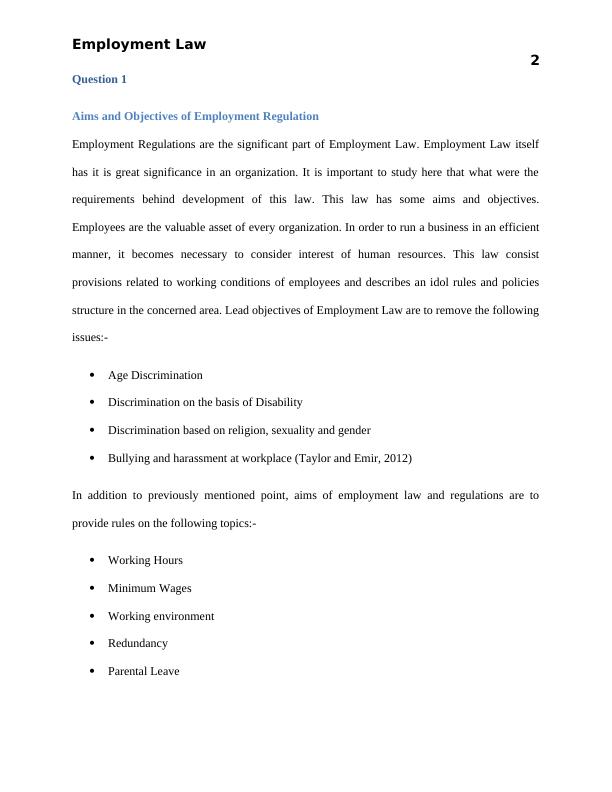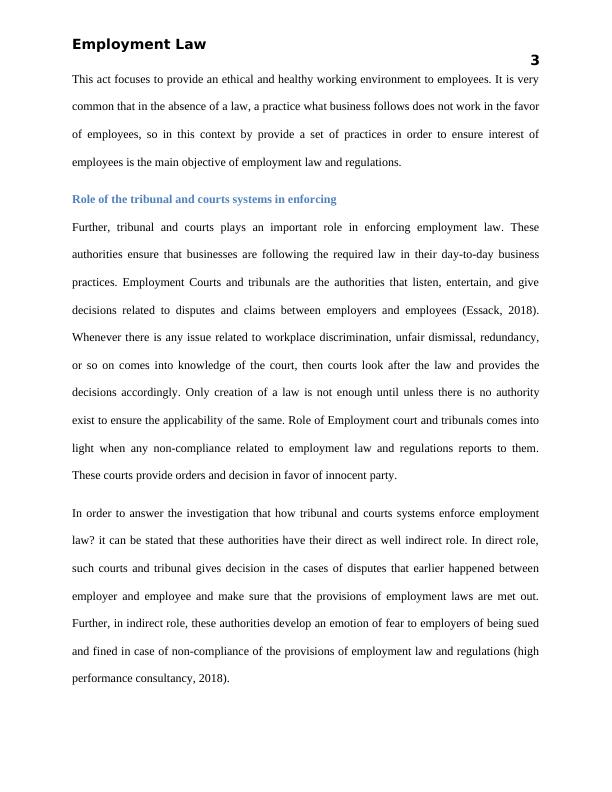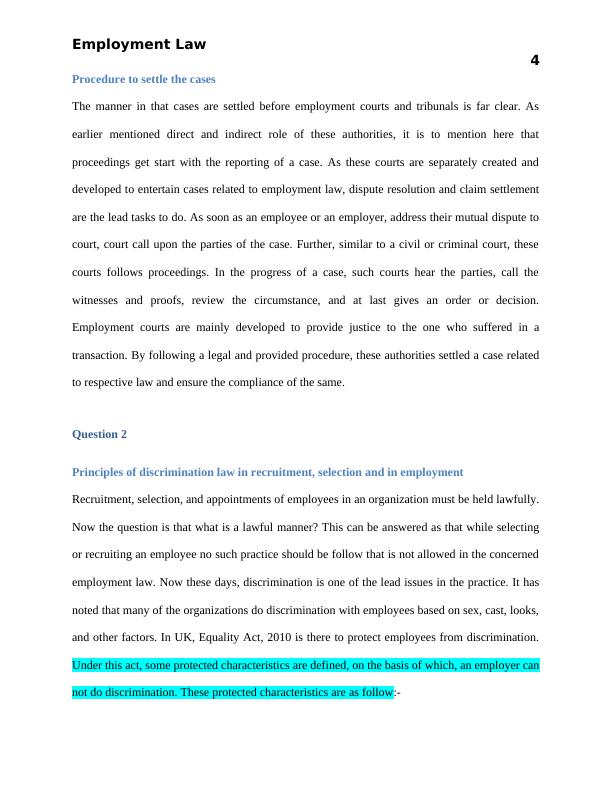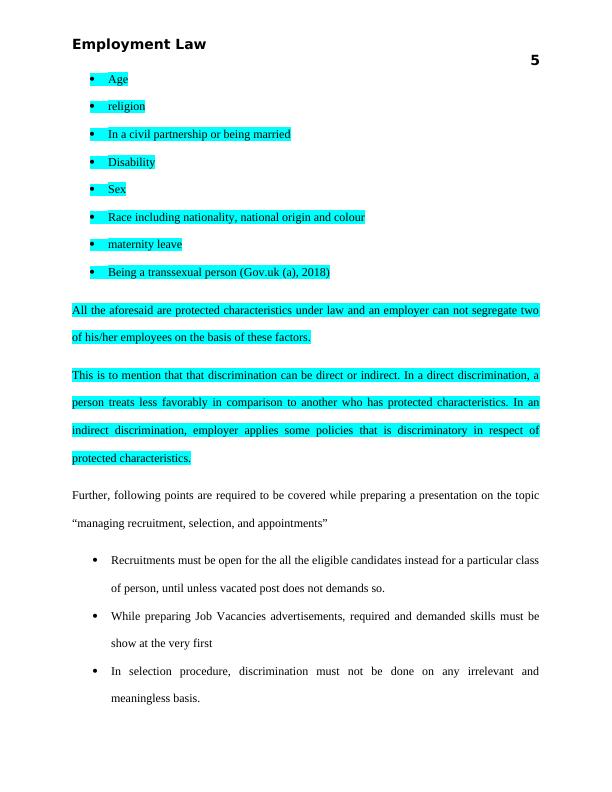Employment Law: A Comprehensive Guide to Managing Workplace Issues Lawfully
The assignment requires the completion of a Learning Reflection Record as part of the development as a HR practitioner. It also includes written answers to activities related to employment law, recruitment and selection, discrimination law, and managing reorganization.
21 Pages5473 Words349 Views
Added on 2023-06-10
About This Document
This article provides a comprehensive guide to employment law and regulations, including the aims and objectives of employment regulation, the role of tribunal and court systems in enforcing employment law, principles of discrimination law in recruitment and selection, managing reorganization and changes lawfully, and managing issues relating to pay and working time lawfully. It also covers the requirements of redundancy law, the law on business transfers, and the major requirements of health and safety law.
Employment Law: A Comprehensive Guide to Managing Workplace Issues Lawfully
The assignment requires the completion of a Learning Reflection Record as part of the development as a HR practitioner. It also includes written answers to activities related to employment law, recruitment and selection, discrimination law, and managing reorganization.
Added on 2023-06-10
ShareRelated Documents
End of preview
Want to access all the pages? Upload your documents or become a member.
Employment Relationship - Australia
|11
|2529
|71
Importance of Ethics in Business Organizations: Two Case Studies Solved with ACS Code of Ethics
|7
|1706
|70
Business and Corporation Law
|10
|2074
|456
Physician Assisted Suicide: Legalization and Prohibition
|12
|3796
|333
Business and Corporation Law: Elements of a Valid Contract and Contract Law Provisions
|8
|1721
|56
Cross-Cultural Environment and Recommendations for AirAsia
|20
|3717
|283

